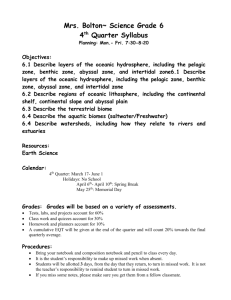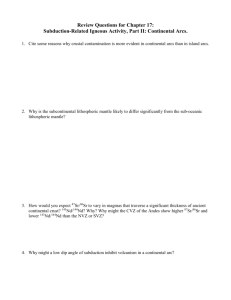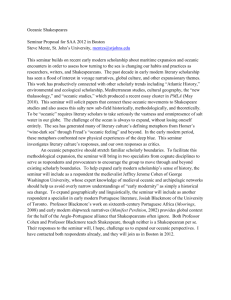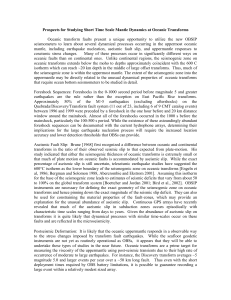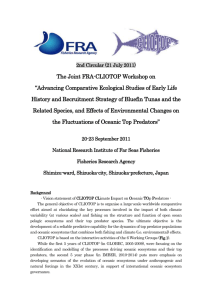ABSTRACT Geology of Modern and Ancient Oceanic Arcs
advertisement
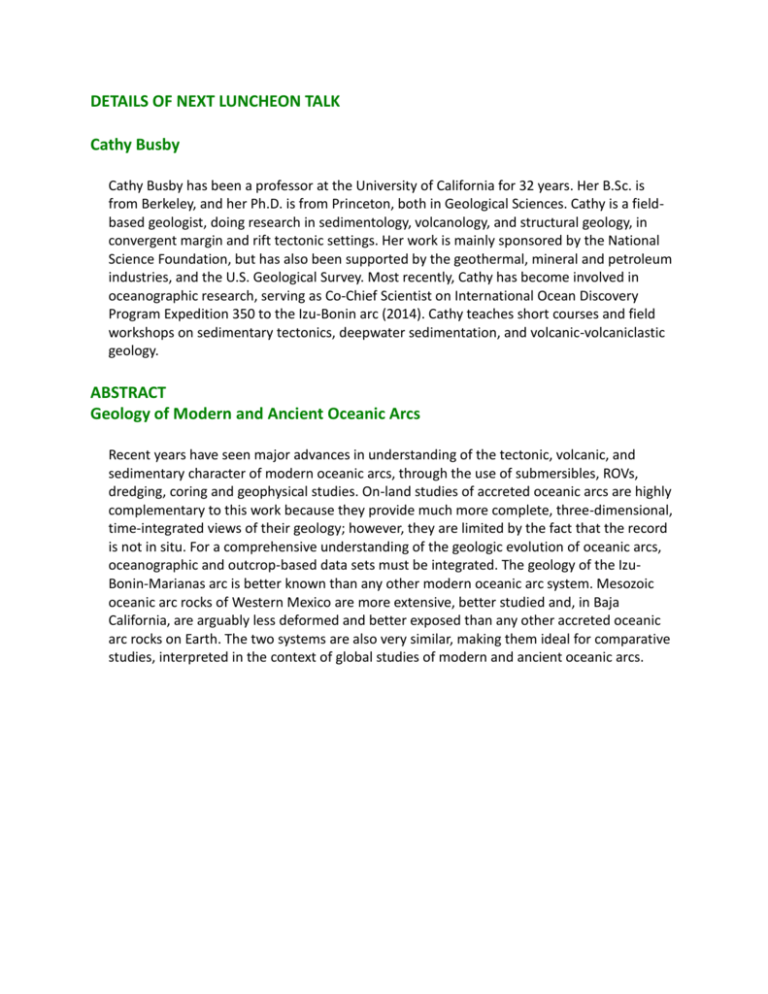
DETAILS OF NEXT LUNCHEON TALK Cathy Busby Cathy Busby has been a professor at the University of California for 32 years. Her B.Sc. is from Berkeley, and her Ph.D. is from Princeton, both in Geological Sciences. Cathy is a fieldbased geologist, doing research in sedimentology, volcanology, and structural geology, in convergent margin and rift tectonic settings. Her work is mainly sponsored by the National Science Foundation, but has also been supported by the geothermal, mineral and petroleum industries, and the U.S. Geological Survey. Most recently, Cathy has become involved in oceanographic research, serving as Co-Chief Scientist on International Ocean Discovery Program Expedition 350 to the Izu-Bonin arc (2014). Cathy teaches short courses and field workshops on sedimentary tectonics, deepwater sedimentation, and volcanic-volcaniclastic geology. ABSTRACT Geology of Modern and Ancient Oceanic Arcs Recent years have seen major advances in understanding of the tectonic, volcanic, and sedimentary character of modern oceanic arcs, through the use of submersibles, ROVs, dredging, coring and geophysical studies. On-land studies of accreted oceanic arcs are highly complementary to this work because they provide much more complete, three-dimensional, time-integrated views of their geology; however, they are limited by the fact that the record is not in situ. For a comprehensive understanding of the geologic evolution of oceanic arcs, oceanographic and outcrop-based data sets must be integrated. The geology of the IzuBonin-Marianas arc is better known than any other modern oceanic arc system. Mesozoic oceanic arc rocks of Western Mexico are more extensive, better studied and, in Baja California, are arguably less deformed and better exposed than any other accreted oceanic arc rocks on Earth. The two systems are also very similar, making them ideal for comparative studies, interpreted in the context of global studies of modern and ancient oceanic arcs.





